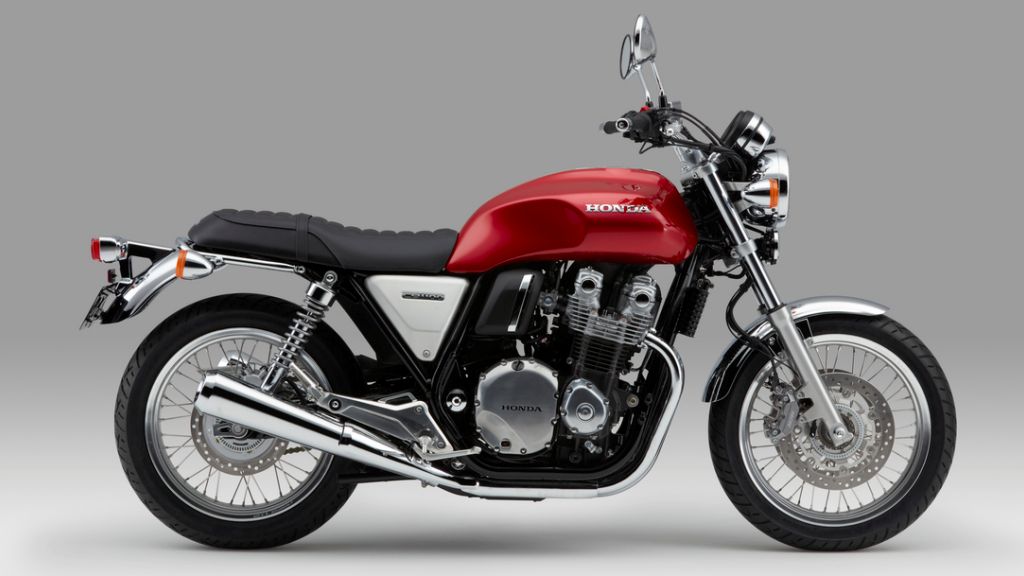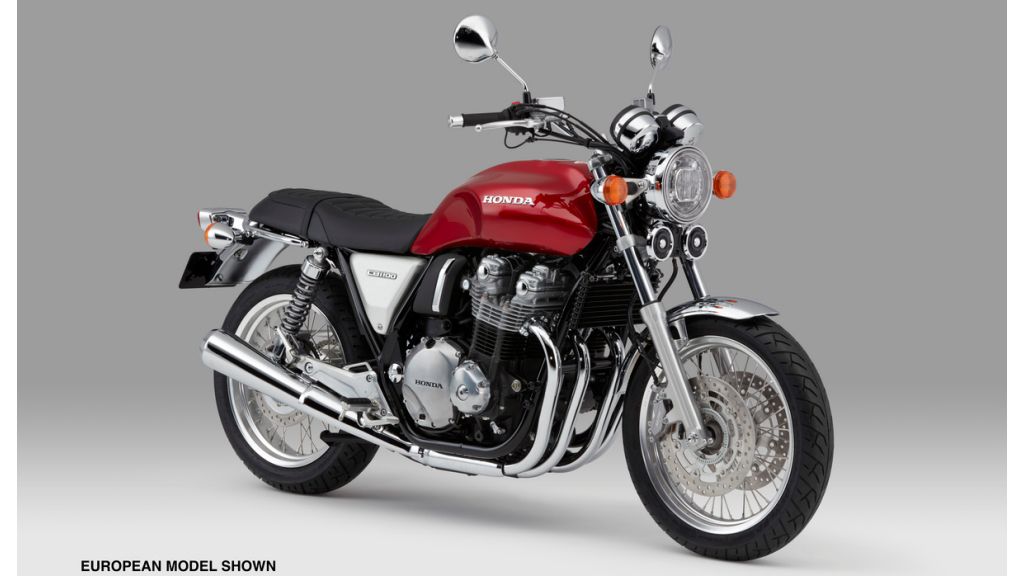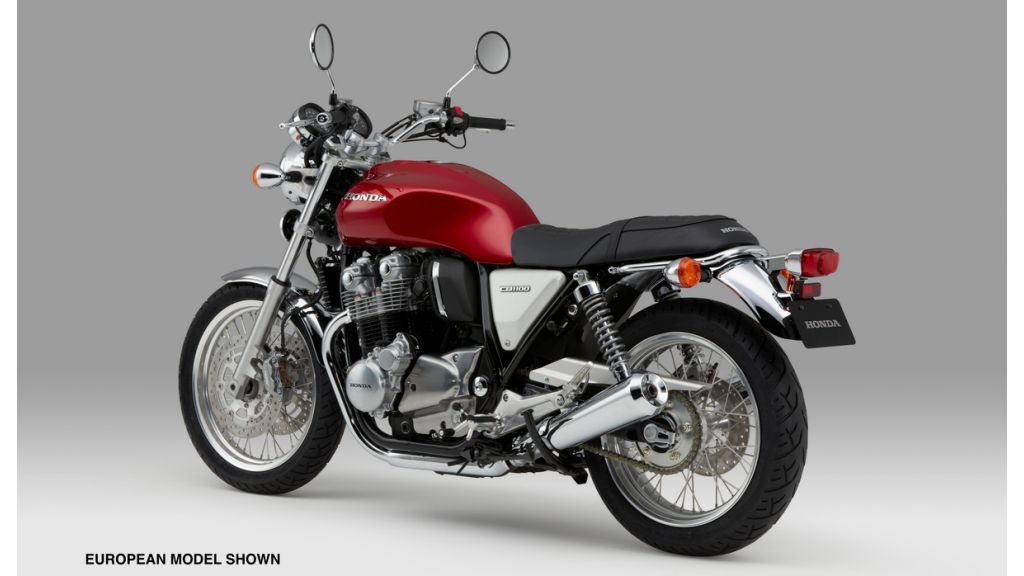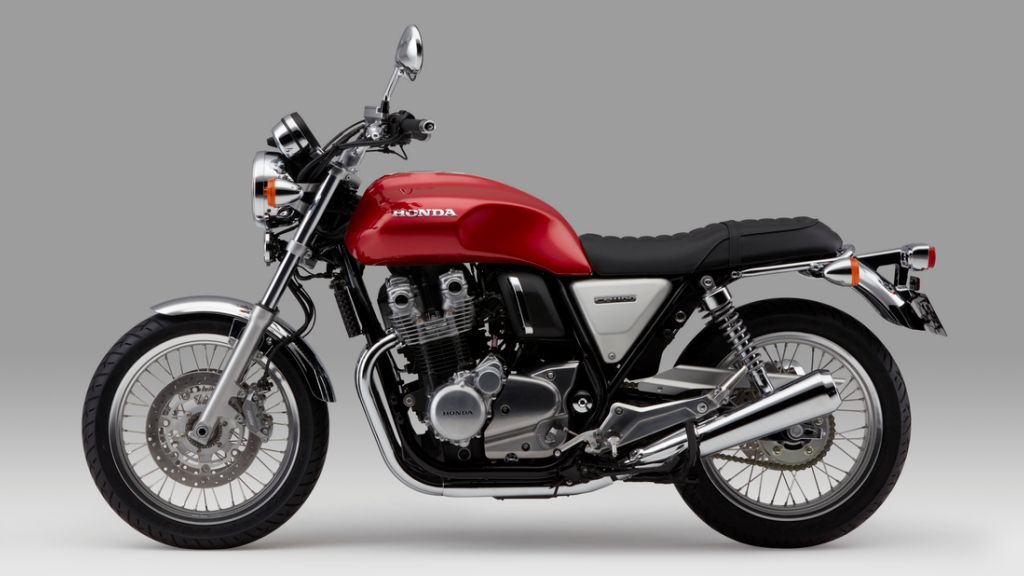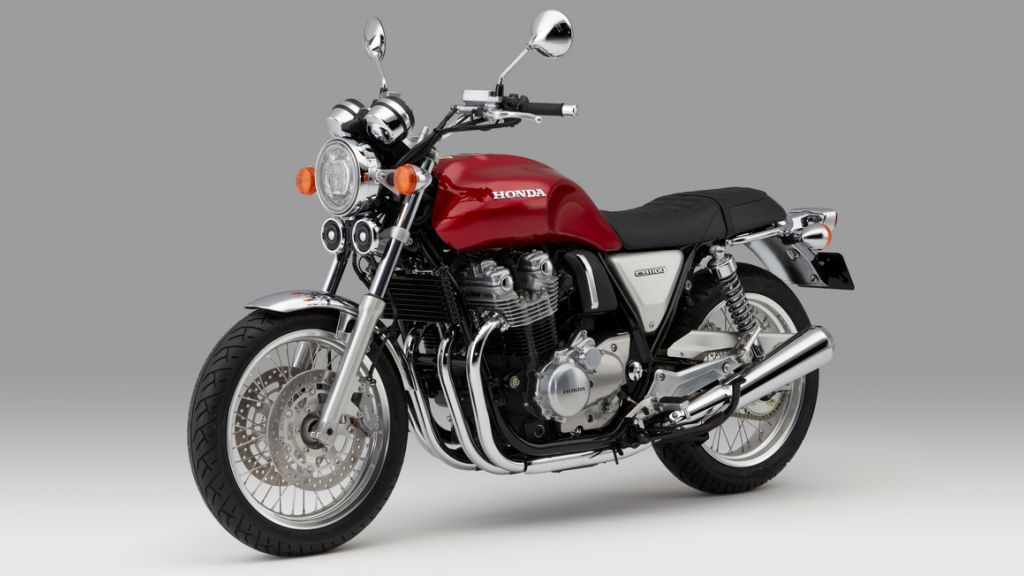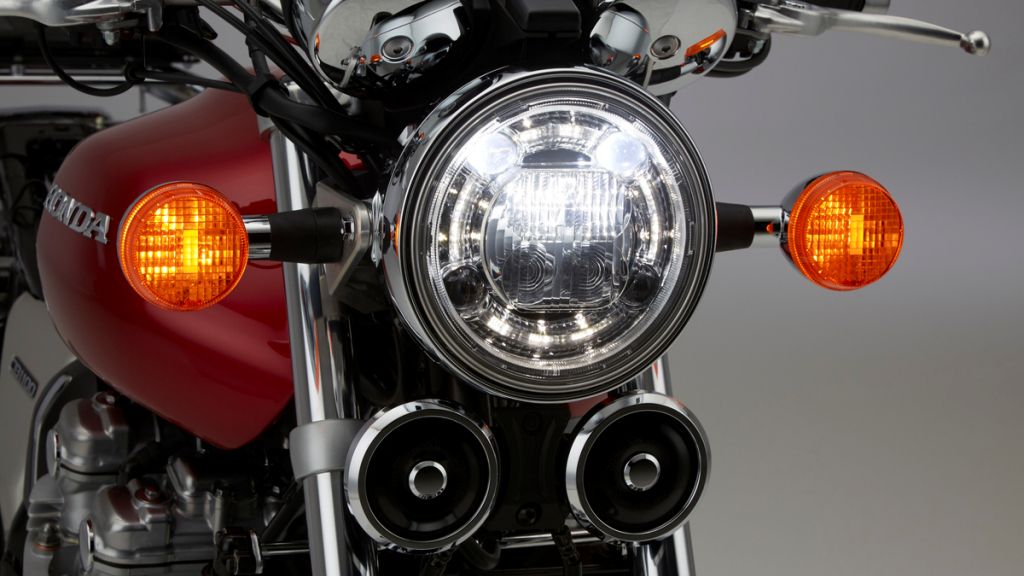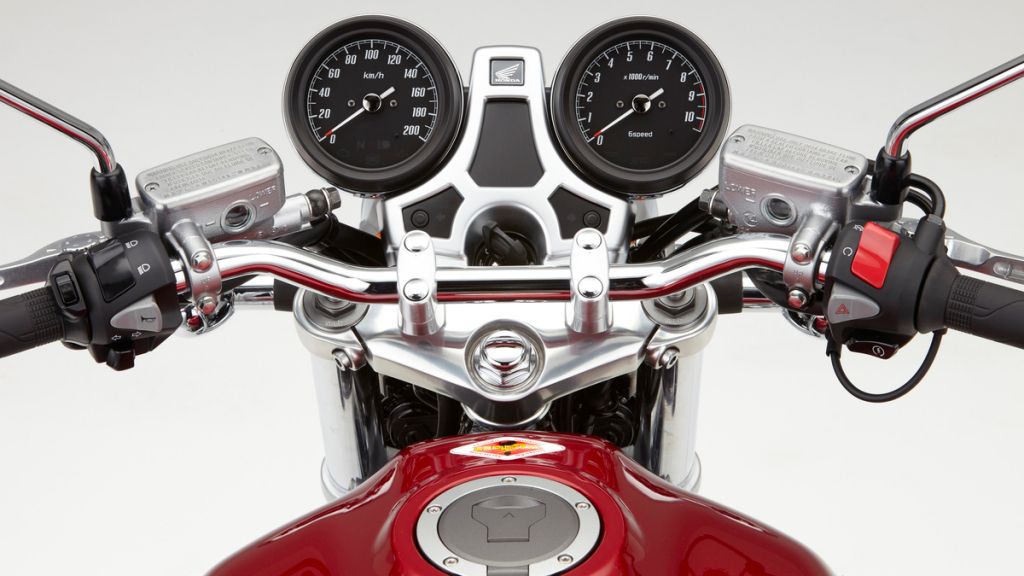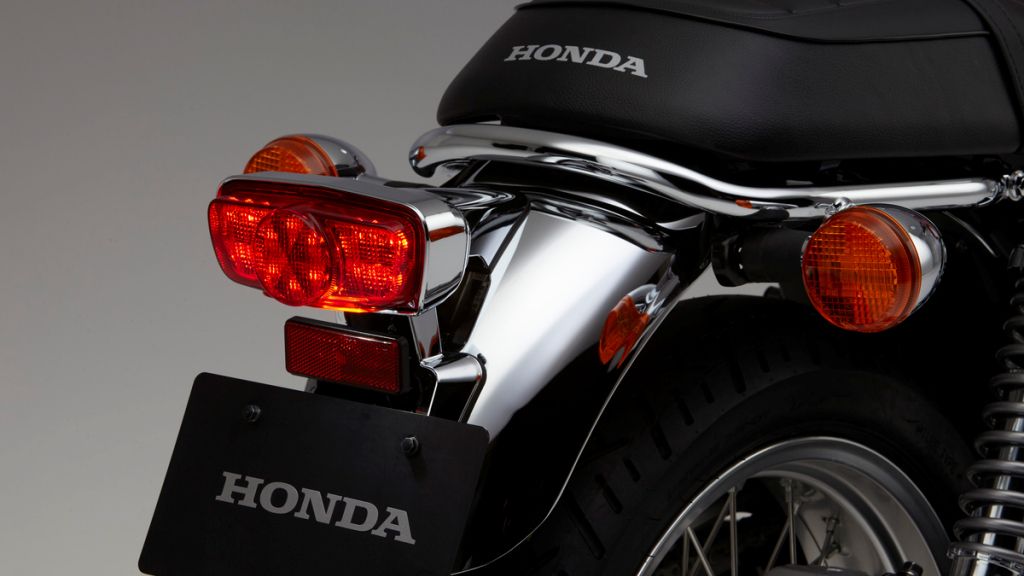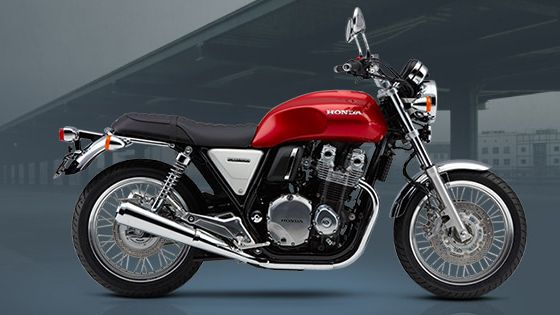Honda->ke291 brings its classic CB->ke28131100 EX back to US shores for the 2017 model year, and with it comes a healthy dose of nostalgia. Retro is king right now, and the “EX” shows that it ain't all about small- to mid-displacement scramblers->ke5343 and cafe' racers->ke3530, there's still room for classic '70s UJM replicas. The EX combines the look of that era with modern features and performance courtesy of the 1,140 cc, air-cooled mill, and it's a combination that has worked ever since this bike was introduced to the U.S. back in '13. Today I'm going to take a look at what's new, what's different and what's up with the latest EX.
Continue reading for my review of the Honda CB1100 EX.
2017 Honda CB1100 EX
- Make: Array
- Model: 2017 Honda CB1100 EX
- Engine/Motor: inline-4
- [do not use] Vehicle Model: Array
Design
The Universal Japanese Motorcycle is the name for a particular type of bike that was popular in the '70s when the Japanese threat was starting to emerge with “standard->ke5328 cruisers->ke392” running mid-to-large displacement engines flooding the market.
Looking at an original UJM, it's easy to see from whence modern sportbikes->ke392 evolved, and the EX exhibits the same classic DNA. The flylines play across the dual instrument gauges and slightly pulled-back handlebars, then back across the gentle swell of the fuel tank back to the dated bench seat. Chrome fenders finish the sheet metal at both ends, and laced rims reinforce the retro look even further. Even the engine configuration takes us back to a time when transverse-mount, four-bore mills were king.
If anything, the fuel tank mars the illusion; it's a little too curvy and the knee indents are a little too dramatic. Plus, it's a flangeless tank, something you didn't see a lot back in the day. I gotta' say that it's a little embarrassing that Honda touts the hidden fuel-tank seam as a selling point here in the 21st century, and ironic that it's on a retro ride that would look even more authentic with a flange tank. That aside, I think Honda hit pretty close to the mark, and I'm definitely smelling what the Red Riders are cooking with this one.
Chassis
A double-downtube, double-cradle frame cups and protects the mill, and provides a convenient place to mount the small, black oil cooler. Backbone and subframe are nearly level but the factory manages to keep seat height reasonable at only 31.2-inches tall.
Steering head geometry gives us 27 degrees of rake with 4.4 inches of trail and a 58.7-inch wheelbase. This gives the bike a very stable demeanor on the straights, but as always, the tradeoff is a certain lack of enthusiasm in the corners. In other words, we have modern performance but with handling characteristics similar to that of the originals.
Showa provides the 41 mm, right-way-up front forks that come with the Dual Bending Valve technology that generates variable damping for a smoother ride, and comes with adjustable spring preload and 4.2 inches of travel. External, coil-over Showa shocks support the rear end and come with adjustable preload as well for better-than-average ride control and 4.49 inches of travel.
Four-pot, opposed-piston calipers bite dual, 296 mm brake discs on the laced, 18-inch front wheel, and a single-bore caliper pinches the 256 mm disc on the 18-inch rim in back with a two-channel ABS on overwatch.
Drivetrain
The inline, four-cylinder engine runs with a 73.5 mm bore and 67.2 mm stroke for an oversquare layout and total displacement of 1,140 cc with a relatively mild, 9.5-to-1 compression ratio. Dual over-head cams time valvetrain, and the four valves in each head allow the engine to breathe efficiently.
Electronic fuel injection and 32 mm throttle bodies manage the induction to meet current EPA standards, and the factory offers a California model that comes with extra equipment to meet CARB standards.
Power numbers on the '17 are still TBA at this time, but I expect it will be somewhere in the neighborhood of 86 ponies and 65 pounds of grunt. This is on a 540-pound bike, so performance is going to feel a trifle sluggish by modern sportbike standards, but I submit that it performs much like a forty-year-old bike should.
Pricing
At the time of this writing, Honda has yet to announce a price for the 2017, U.S. version of the CB1100 EX, but the '14 rolled for $10,399, and I expect the current MY to be in that ballpark.
Competitors
I wanted to find something with a similar classic look, and first considered going to Europe's boot for a match. Some of Moto Guzzi's V7 II and V9 bikes kind of fit the looks requirement, but the mills were a bit too small. From there I checked out some of the British fare and lo-and-behold there I found the Bonneville->ke1865 T120 from Triumph->ke1864.
Granted, the Bonnie has an even older pedigree, but it serves as the British version of the early sportbikes before the fully-faired Japanese look dominated the market. The two are similar in their Spartan front ends, curvy fuel tanks and deep knee indents ahead of near-level bench seats. Dual external shocks keep both looking right for their eras, but the bellowed forks on the Bonnie come sans any sort of adjustment. Brakes are more or less even across the board, and ABS protection is included on the base model of both bikes.
In typical Trumpet fashion, the 1200 cc engine comes laid out in the parallel-twin configuration, but passes on the purist approach with a radiator for the water-cooled engine. Ironically, the factory used its throttle bodies designed to look like the old mechanical-slide carbs from back in the day, which seems a bit of a wasted effort in light of the rad. Honda makes no such effort with the throttle bodies, and honestly, the look doesn't suffer for it in the least. Trumpet milks 80 ponies and 77.4 pounds of grunt from the Bonnie's mill, a tradeoff with the 86/65 from the “EX” plant.
Price on the Bonnie starts at $11,500, a skosh higher than the $10,399 ballpark sticker on the Honda, but close enough that price alone won't give Honda much of a leg up in this market.
He Said
“Yeah, that's right. I actually endorsed a flange tank. Never thought that day would come, but sometimes the look works, and given the timeframe in question here I call it a good fit. Beyond that, I gotta say Honda did a good job with this bike, and it carries oodles of nostalgic appeal. Well done, Honda.”
She Said
My wife and fellow motorcycle writer, Allyn Hinton, says, "It looks so British, it only make sense to go to the U.K. to find something with the same styling. I feel a bit conflicted about losing the flanged tank. Yes, it looks better as far as fit-and-finish is concerned, but from a heritage standpoint, a flanged tank looks more authentic. Overall, I like the bike, which is a rare declaration for me as far as Honda is concerned. When introduced in the U.S. in 2013, the CB1100 was a nice UJM version of a British style that I really like."
Specifications
|
Engine: |
|
|
Engine Type: |
1140cc air-cooled inline four-cylinder |
|
Bore And Stroke: |
73.5mm x 67.2mm |
|
Induction: |
PGM-FI with automatic enrichment circuit, 32mm throttle bodies |
|
Ignition: |
Full transistorized |
|
Compression Ratio: |
9.5:1 |
|
Valve Train: |
DOHC; four valves per cylinder |
|
DRIVE TRAIN: |
|
|
Transmission: |
Six-speed |
|
Final Drive: |
#530 O-ring-sealed chain |
|
CHASSIS / SUSPENSION / BRAKES: |
|
|
Front Suspension: |
41mm fork with spring preload adjustability; 4.21 inches travel |
|
Rear Suspension: |
Twin shocks with spring preload adjustability; 4.49 inches travel |
|
Front Brake: |
Dual four-piston calipers with full-floating 296mm discs with ABS |
|
Rear Brakes: |
Single-caliper 256mm disc with ABS |
|
Front Tire: |
110/80R-18 |
|
Rear Tire: |
140/70R-18 |
|
DIMENSIONS: |
|
|
Rake: |
27.0 degrees (Caster Angle) |
|
Trail: |
114mm (4.4 inches) |
|
Wheelbase: |
58.7 inches |
|
Seat Height: |
31.2 inches |
|
Fuel Capacity: |
4.4 gallons |
|
Curb Weight: |
540 pounds |
|
OTHER: |
|
|
Model ID: |
CB1100CAH |
|
Emissions: |
Meets current EPA standards. California version meets current CARB standards and may differ slightly due to emissions equipment. |
|
Available Colors: |
Candy Red |
|
Warranty: |
One Year Transferable, unlimited-mileage limited warranty; extended coverage available with a Honda Protection Plan. |


